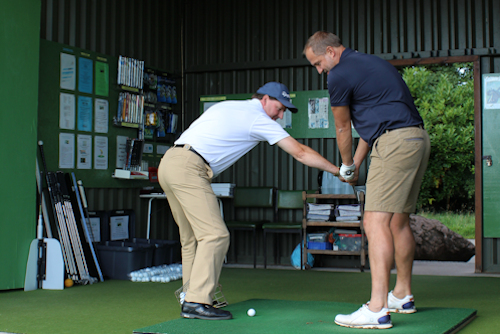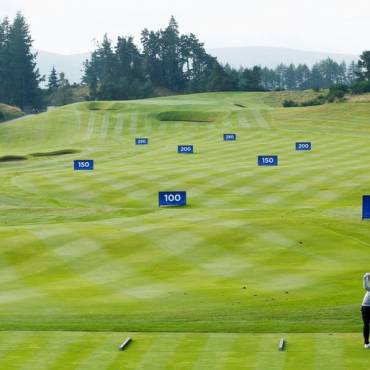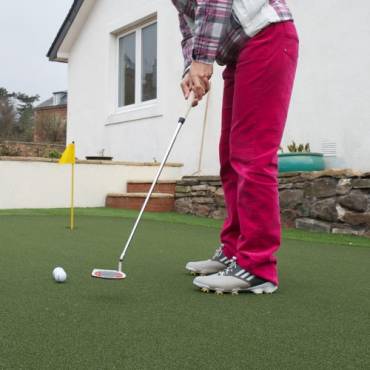One of the most important parts of your game is from 100 yards inwards to the green. It’s been proven that it’s one of the key elements to lowering one’s scores.
On a daily basis l constantly see golfers incorrectly practicing this aspect of their game. Wedge play is mainly about ‘feel and control’ for the distance you are hitting the ball and not about brute force. How often have you heard the line I hit a ‘drive and a wedge’ to that hole portraying the ‘he-man’ syndrome which in this game rarely achieves a lot. A wedge swing should be a reduced swing speed version to promote control, feel, consistency and accuracy. It doesn’t matter how far you hit your wedges just as long as you hit it the correct distance accompanied by the correct strike at impact.
 Personally, I hit my strongest loft wedge approximately 110 yards in the summer months which can be reduced by up to 20 yards in the winter months. I can easily add up to 15 to 20 yards more distance however, my feel, control and quality of ball strike will be compromised.
Personally, I hit my strongest loft wedge approximately 110 yards in the summer months which can be reduced by up to 20 yards in the winter months. I can easily add up to 15 to 20 yards more distance however, my feel, control and quality of ball strike will be compromised.
A golfer’s length is governed by how far they hit their driver and not how far they hit their wedges.
Consider not using a full swing or body action when using any wedge club. Within reason the longer the ball stays on the clubface at impact the more feel is produced.
Think about throwing a ball underarm…..you can throw it quick and hard which gives you little feel when it’s released but when you slow down but still accelerate at the moment of release how much does your feel improve?
Hitting a golf ball with a wedge is basically the same principle. My philosophy is ‘less is more’ by that I mean less effort produces more efficiency and less can go wrong too.
As an example try reducing your full wedge shots to a ¾ swing and play these with less body turn/action….I admit there will be a limit to how far you can hit the ball but you will definitely improve your feel. Less body turn will also result in less ball flight dispersion and reduced draw or fade movement. You may well be able to shape the flight of the ball in the air but no one can control a swinging bounce so ideally you want to hit the ball straight and bounce it straight too.
A wedge swing is the steepest swing in the bag as is the steepest ball flight you are likely to achieve over a short distance. The angle the shaft meets the club head is the steepest in the range of irons which is matched by a steeper swing plane. Your angle of attack on the downswing has to be steep so the ball matches that in flight. Hitting down on the ball through impact is the measure of improving backspin but what is very plain is you have to strike the ball first and the turf after. The loft on the club face can decrease at impact which may result in a lower initial launch angle off the face but the flight shouldn’t be compromised by any significant amount. Remember……’height does not guarantee backspin it’s the quality of strike that does’. Simply this can be achieved without using your wrists throughout, which results in a swing that can feel quite firm however, as long as you are not forcing the distance aspect of the shot you will be using the ‘less is more’ theory of not overcomplicating the method. Basically, the less moving parts to your swing and body action within reason the more feel and control you will produce. I can keep the ball under control without really using my legs a great deal and still produce more than 75 yards. The less moving parts to a swing means the less could go wrong!
I’ve heard many times that height is the key to the getting the ball to stop quicker on the green. I strongly believe this is not always true. There is no doubt the first bounce may be shorter in length to the second bounce than a lower ball flight but it also depends on whether the ball was struck with much backspin in the first place. How often have you seen the pro’s on television hit their ball in low and it still checks and pulls up very quickly? In this country it is unusual not to play when it’s windy…a key element of losing ball control if it’s a high flight.





